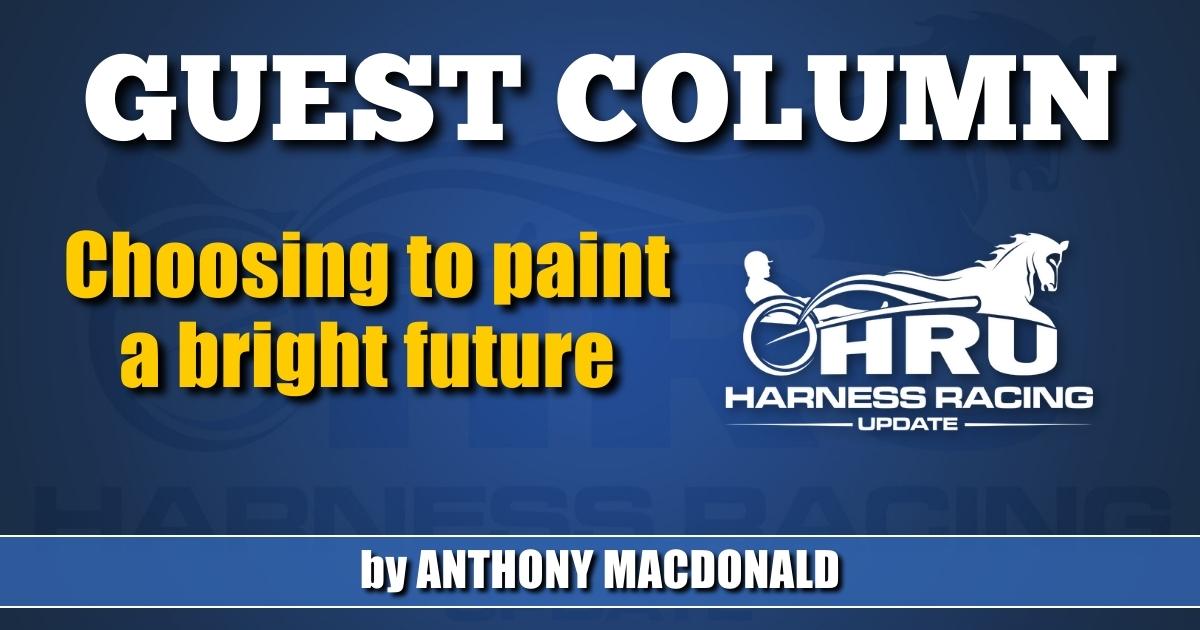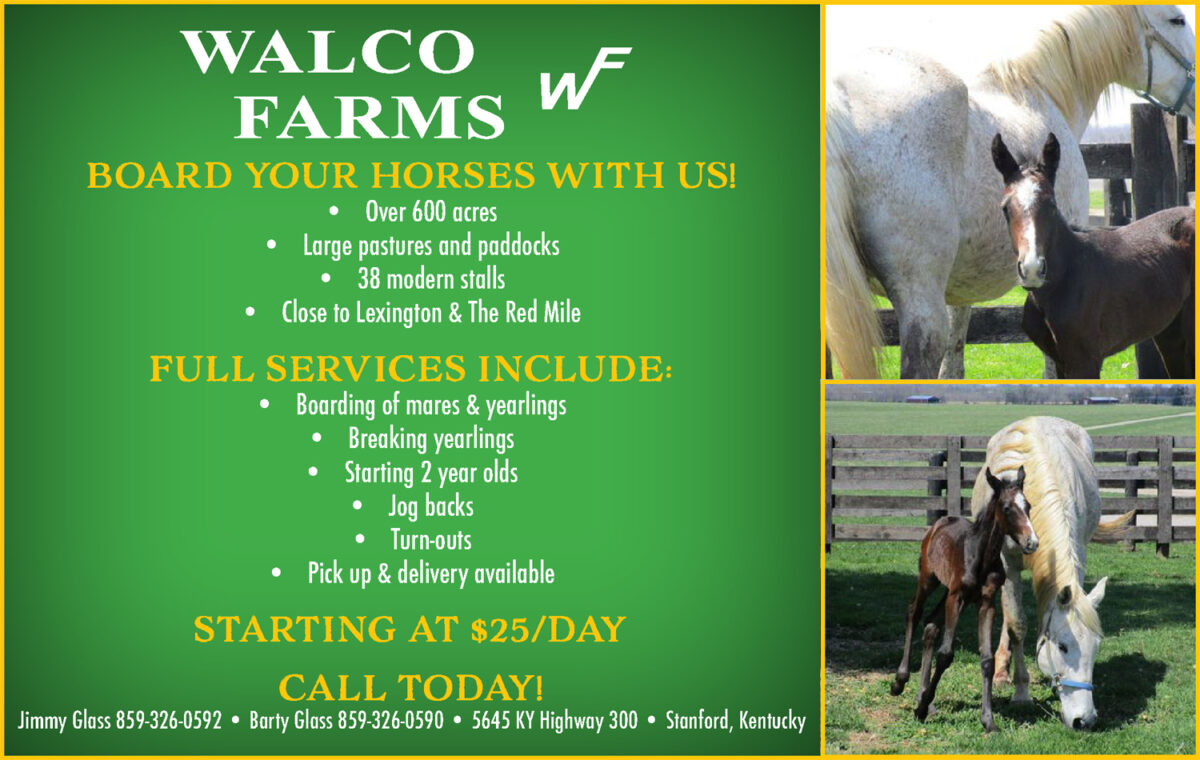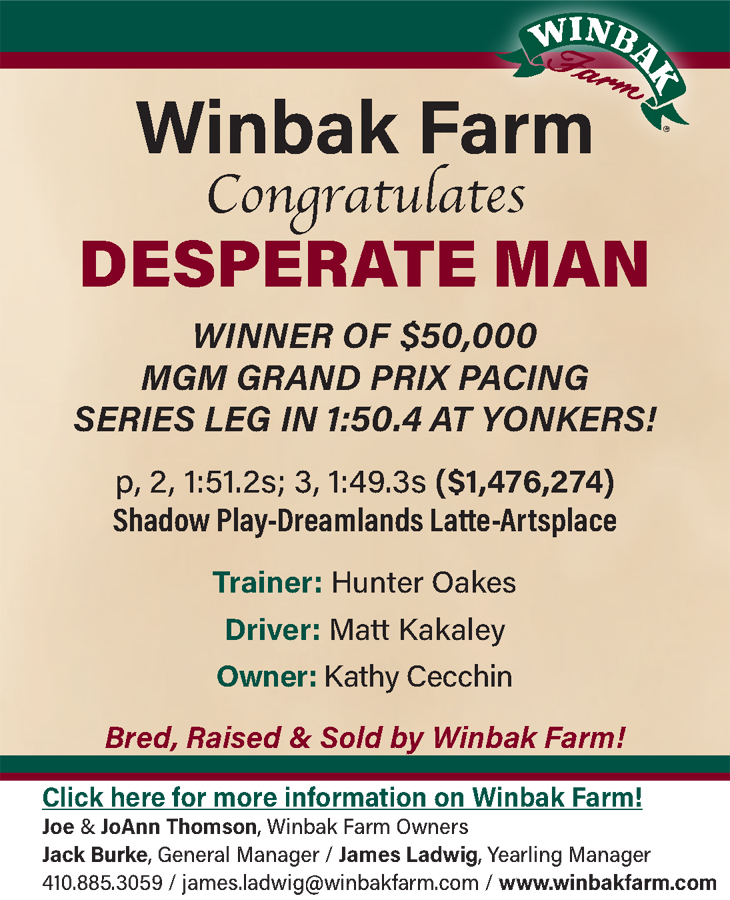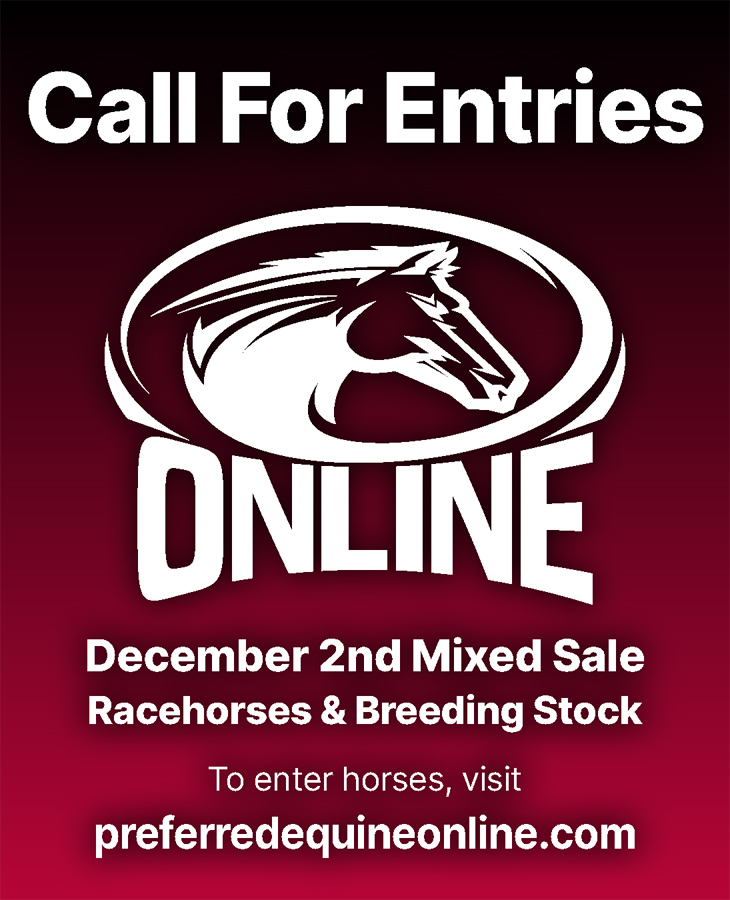Choosing to paint a bright future
There is a way forward.
by Anthony MacDonald
When we talk about our industry and discuss how we can improve it and move forward, we have to speak quietly as pessimism and cynicism are at an all-time high in horse racing.
Some people find it easier to talk about what we haven’t done as if we can’t, and what we still need to as if we won’t.
People in that category are present in every industry, and every walk of life.
They are not the builders, or the doers. They are the naysayers. They are the ones constantly telling you, “You know what you need…” when they have no idea what they need themselves. In their eyes, we will never succeed, and if we do, we were just lucky.
To be fair, there is plenty of things we can (and need) to improve in horse racing. I don’t think that is lost on anyone.
Many of these issues are also subjective. What I believe we need to improve may not be what you believe we need to improve, and quite frankly neither may be needed at all.
But since this is my column, I’ll tell you what I’d like to see happen moving forward in racing.
Firstly, I believe we do need to recognize that it’s harder to fill competitive fields now more than ever before, and that weakens our overall product and brand.
To mitigate this, we need to know what is available to race week-to-week in our jurisdictions.
That information needs to be available to both the race secretaries and participants. If we knew what type of horse would get in regularly and what we needed to strengthen our prospective entry boxes, most people would seek out those types of horses.
But the lack of confidence in consistent racing breeds apathy which only fuels arguments in racing, and weakness our sport.
Seven weeks ago, as we entered sale season, we realized like many other barns that we had no way to secure sufficient help in our stables. We took a different approach and decided that we would advertise on a third-party job site.
After two days, we had to close the ad as we had received 253 applications. Many of these people knew very little about horses but wanted very much to work. We hired a hair dresser who used to work on a ranch, two ladies who were saddlehorse people, and we have an interview next week with someone who is a DJ. The common denominator is they love horses and wanted a job.
Our industry has adopted a carnival mentality over the years, and we have descended to a level where there is no growth in our workforce because we don’t seek it out.
We need to hire, train and expand. No business can survive without this happening. I encourage my fellow horsemen to train horses and humans if we are to continue to move forward.
At the very least TheStable.ca should have good music in the barn this winter, and everyone will be well groomed.
We are also constantly talking about horse shortages, and ownership depletion within our sport, but we haven’t spoken much about possibly the most serious by-product of these to come: a trainer shortage.
The problem is, most trainers are great people, but don’t know how to build and strengthen their own barns. Most struggle with transparency and the majority have no idea about the importance and value of communication with their clients.
I would like to see the stakeholders of this industry move to adopt and fund a uniform fractional ownership hub that can be used to help market and advertise both racing and its participants, highlighting the entertainment value in racing while helping our trainers move to a more open-door policy for new and interested clients all over the world.
You will hear the naysayers tell you that no one wants to be a horse owner. Well, their pessimism won’t work here. TheStable.ca is about to cross the threshold of 1,000 clients in 13 countries and we have added well over 40 since September of this year alone.
The reality is that people have and do choose horse ownership as a new and affordable form of entertainment. The experience horse racing offers is rare, exciting, and very attractive to the average person in society. Now more than ever everyday people put a premium on affordable entertainment.
To truly succeed we need to bring new owners into our industry and we have proven that can be done. The only hurdles are to educate our horsepeople as to how to achieve an optimal setting for client interest and procurement.
We need to seek out and grow our workforce in the same manner everyone else does in society.
This begins with understanding that we are not as unique as we think we are when it comes to recruitment and employment. Together, by understanding this will not happen overnight, but it can happen, we should begin to see the paths forward for racing more clearly.
We can begin to have more pragmatic conversations with other stakeholders in other parts of the industry.
I call on all industry stakeholders to begin to invest in this industry’s future. Build fractional ownership hubs, cultivate our newest clients and work with our trainers to grow our industry in the soil we have already proven is very fertile.
We have many other dedicated people who can work on other aspects of the industry that simultaneously need attention. One brick at a time we can build a better horse racing industry for those who are here now and soon to come. This will not happen overnight, and there will be plenty more pessimism along the way.
If we all want a future together in an industry we all love, then we need to drown out the negativity, and understand that there is a way forward.

















